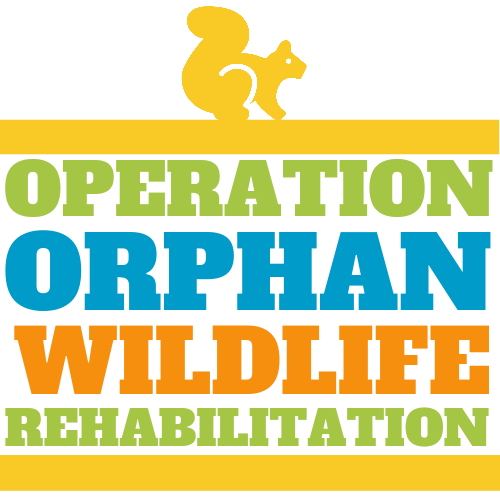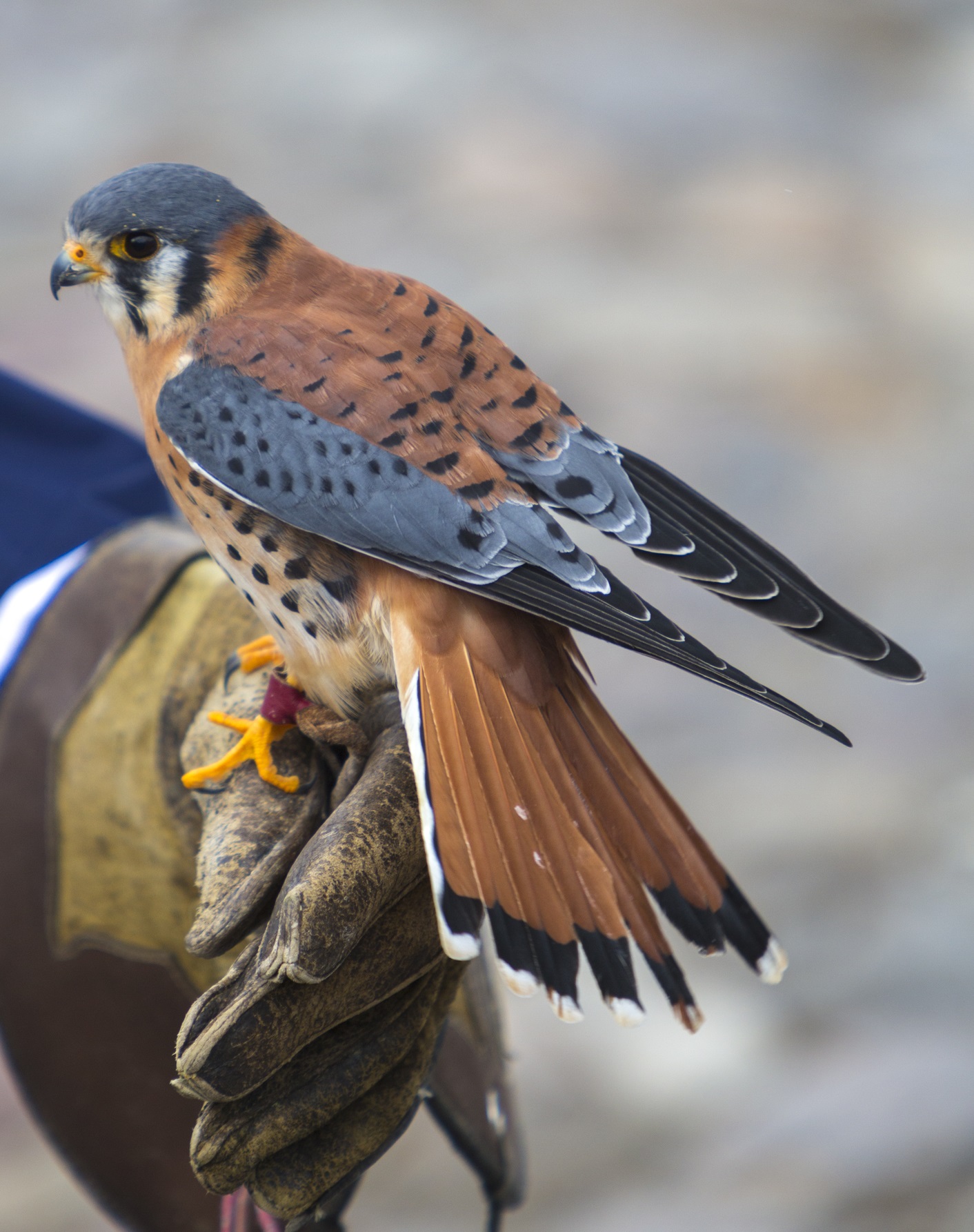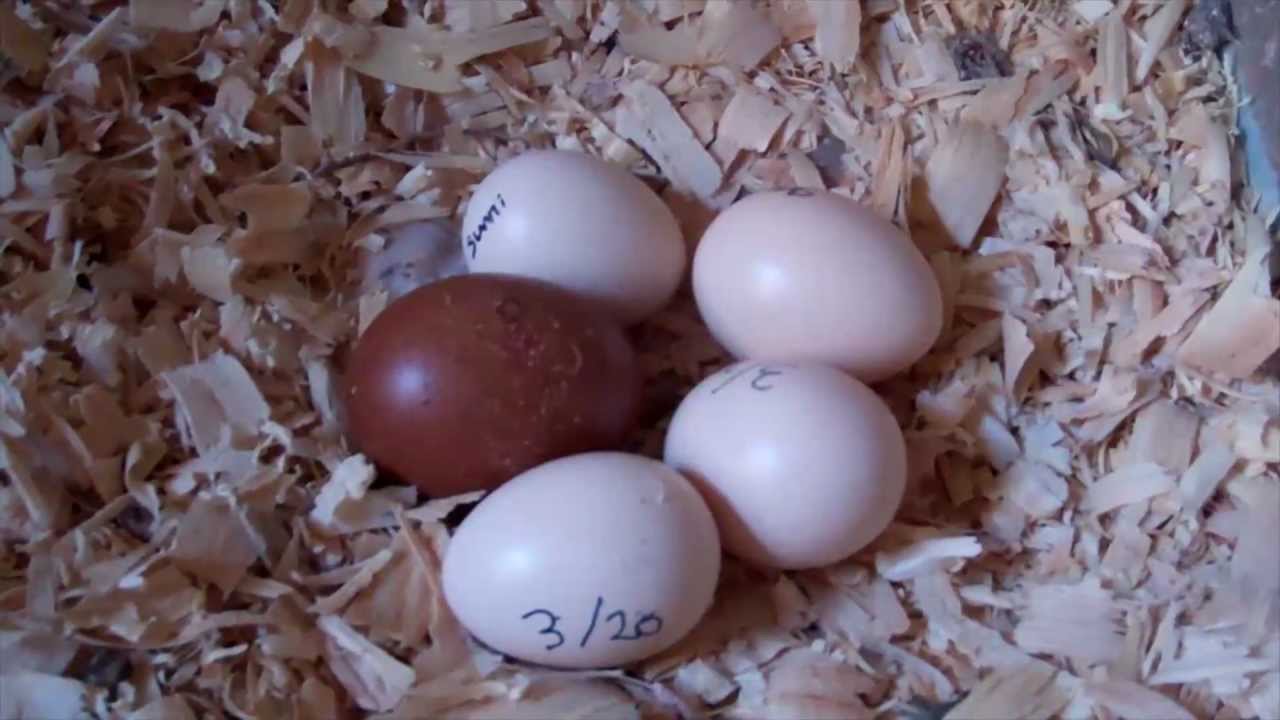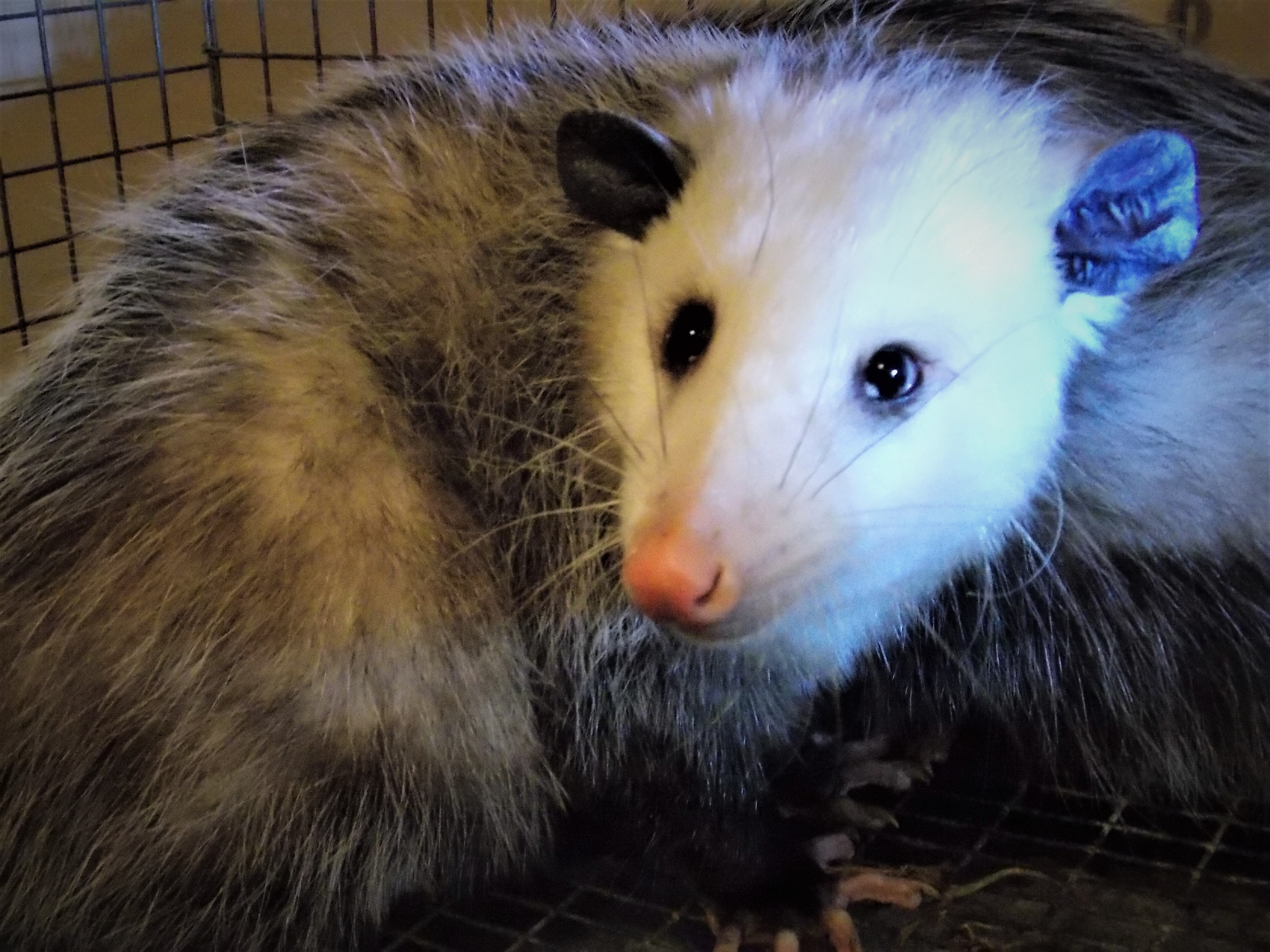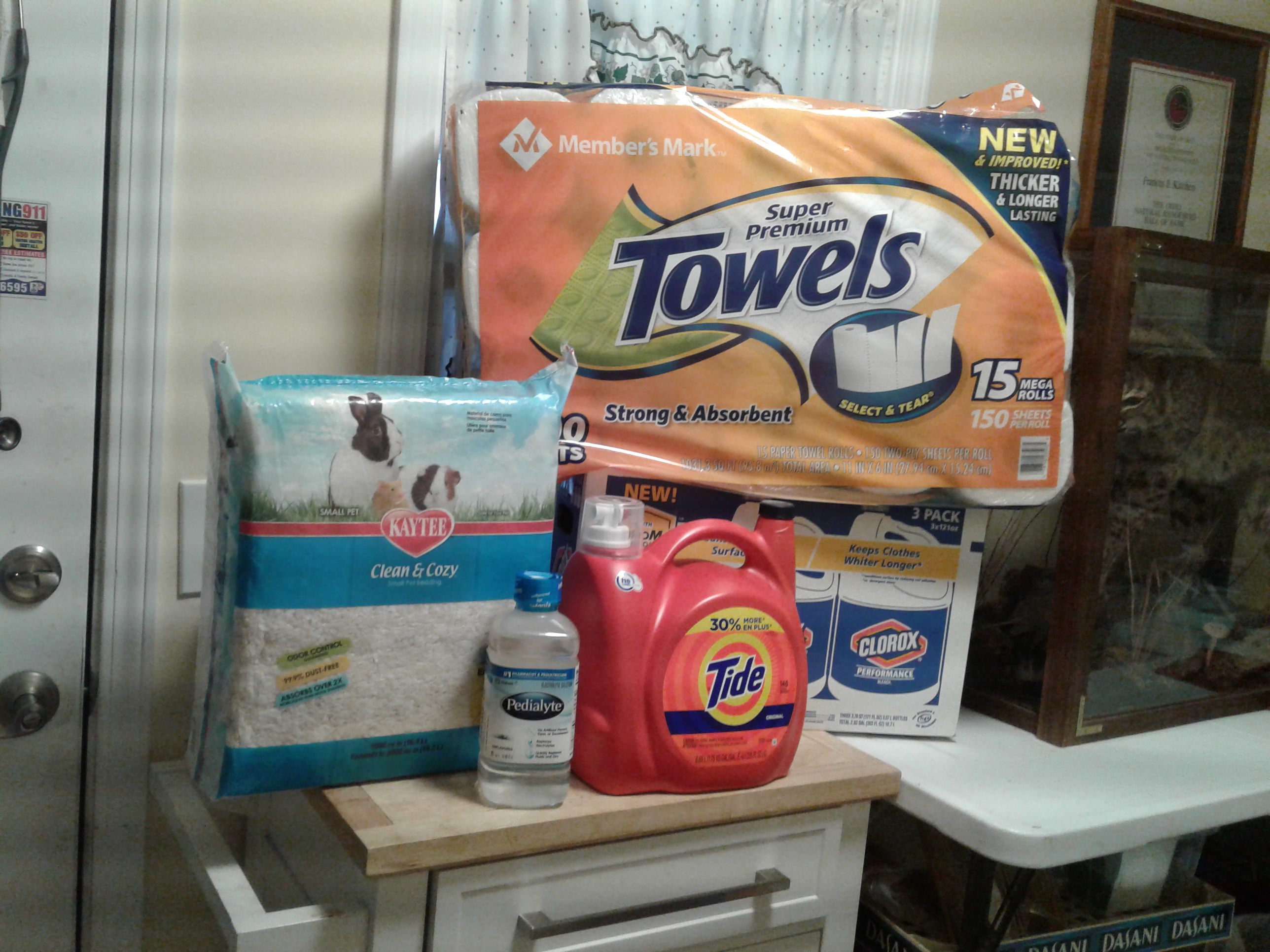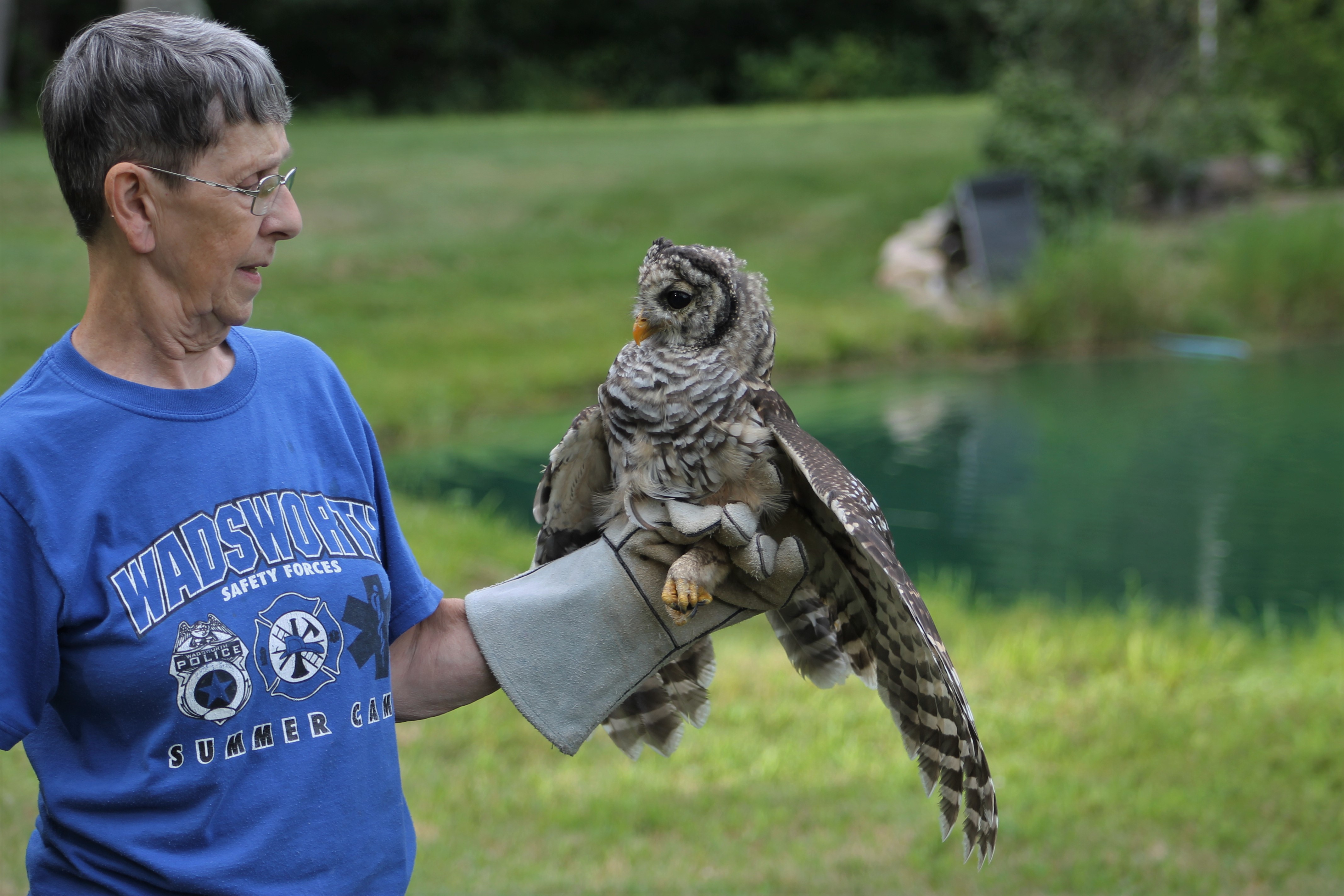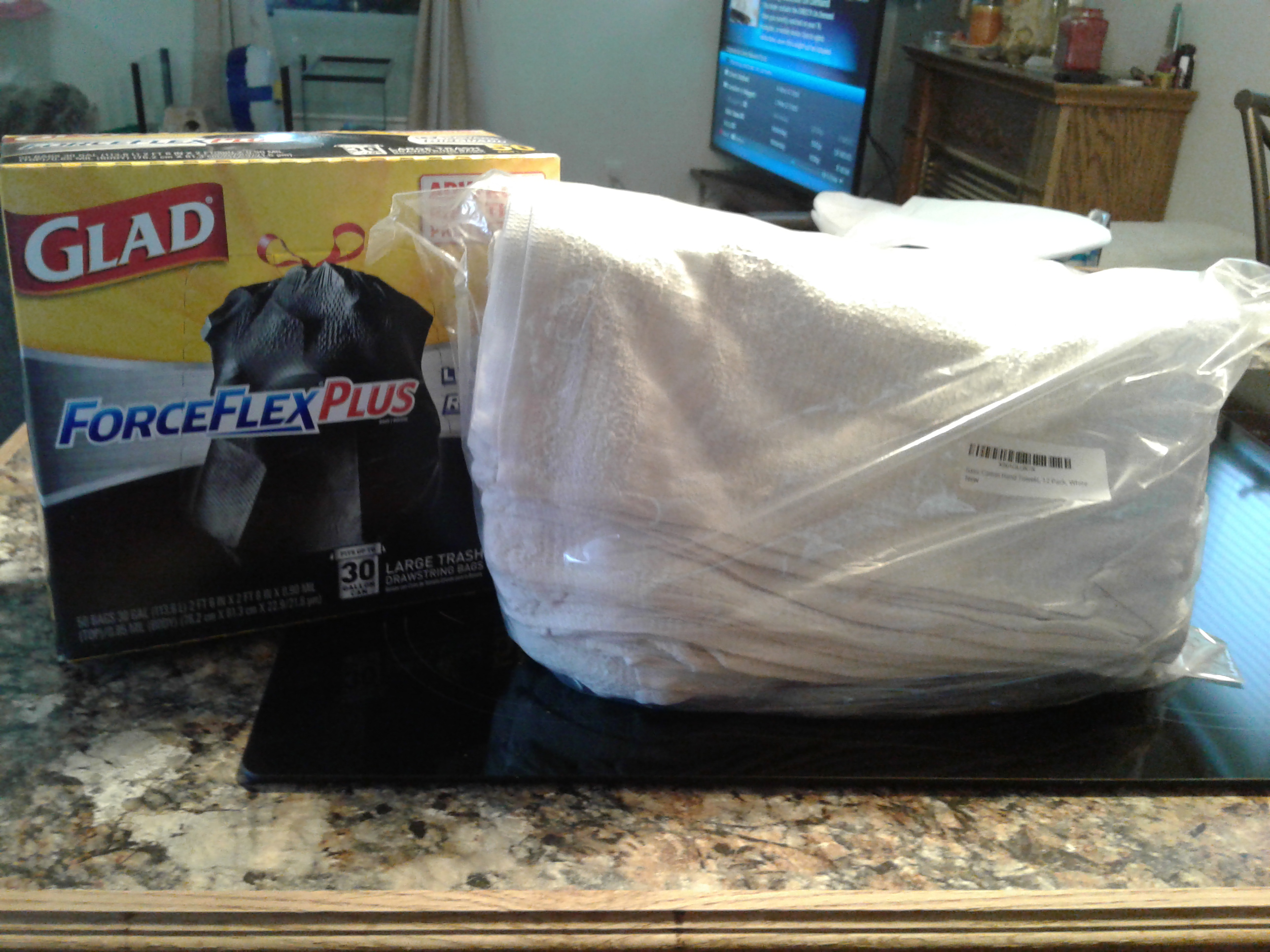Little Fighter
Back in the early 70’s, I received a call from my sister-in-law, Sandy who was at work in a factory located in Barberton. They found a baby bird and was afraid it wouldn’t make it until the workday ended without any help. I was on the case! I immediately drove to the factory thinking that it was a pigeon or a sparrow, which are both known for nesting in buildings. I was wrong. What I found was a Hawk’s nest that had fallen from very high up in the rafters with three hatchlings. One was dead inside the nest, another was dead and still inside its broken egg, and the third was the only one that survived. Looking closer I realized that the baby was a Kestrel hawk, also known as the Sparrow Hawk.
This little guy had more than likely just hatched that day. I was amazed that he survived the fall! He could not even hold up his head; however, he did have a broken wing. I took him to a veterinarian that I was using at the time and he set the wing.
Sadly, that veterinarian set the wing incorrectly. When the wrap was taken off the wing, it was not shaped correctly. The little guy could fly, but if he went too high he could have killed himself when he went into a dive (stoop) because of the misalignment of the wing, or he could have flipped in mid-air and broken his neck. Because of this mistake, he was not able to be released and became an education bird that we named T.I. for “The Incredible” Hawk.
To keep him safe, whenever I would exercise him, I would place a tether on his leg. This allowed me to fly him so that he would not get too high an altitude and hurt himself. Often when I flew him he would bring a wild mouse back to me, lay it on my shoe and vocalize with pride and want to share his kill. Since I don’t feed wild mice to anything out of fear of secondary poisoning, I would replace the wild mouse for a feeder mouse that I get from a breeder. Then, I would hold my hand down, he would pick up the feeder mouse and I would bring him back to his cage for him to eat what he thought was his fresh catch.
Although T.I. was never able to be released back into the wild, his educational purpose was so helpful. T.I. lived to be a ripe old age and educated many boys and girls on the ways of hawks.
Things you should know about Kestrel hawks:
- The Kestrel, considered part of the Falcon family, can hit speeds of up to 175 miles per hour when in a dive for their prey.
- The Kestrel is our smallest hawk in Ohio.
- They are population control at its best.
- The males have more color than females. T.I. was a male, so he had much more color than the female.
- Hawks lay their eggs at two-day intervals and the babies hatch in the same order.
- Kestrels eat other birds. If you find small, sparrow-sized birds missing their heads, you more than likely have a Kestrel living off them. They also eat insects and small-sized rodents.
- The Kestrel is one of the hawks that often keeps an eye on the bird feeder. Remember when you put the bird feeder out, place it close to a shrub, bush or tree for a quick escape for the birds.
- SECONDARY POISON: Please remember when you decide to put poison out, that whatever eats the poisoned animal may get poisoned as well.
If you see one of these little but mighty birds, please sit back and enjoy the beauty of them.
Copyright 2017 Fran Kitchen
Operation Orphan Wildlife Rehabilitation, Inc. is a 501(c)3 Non-Profit Organization and does not receive federal funding. We are supported entirely through private donations, memberships, and proceeds from our education programs. To Donate visit our website here.
